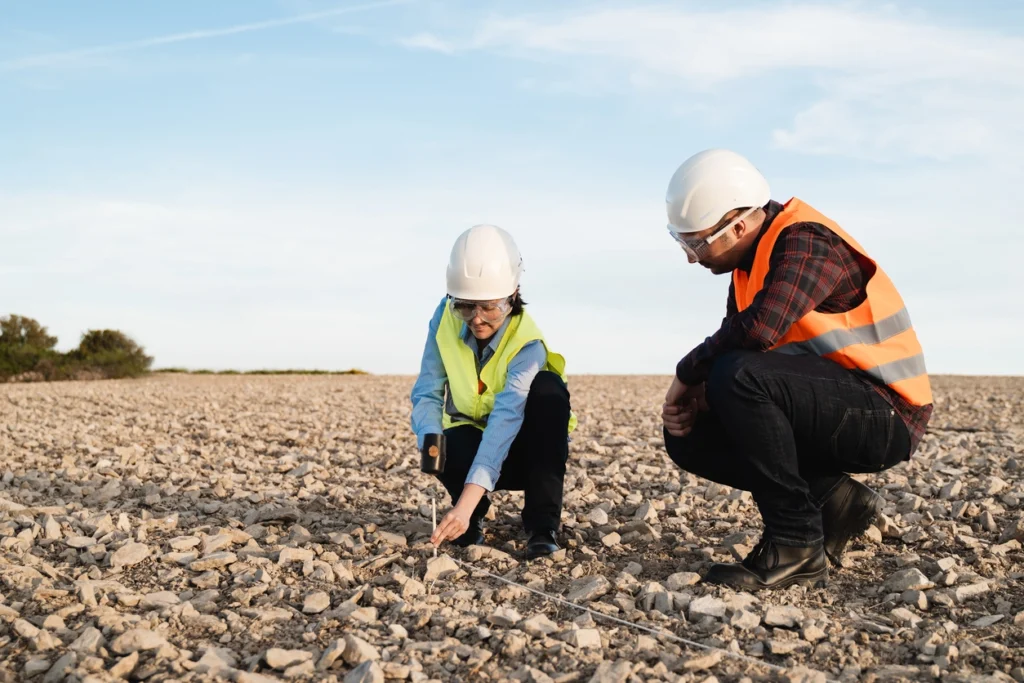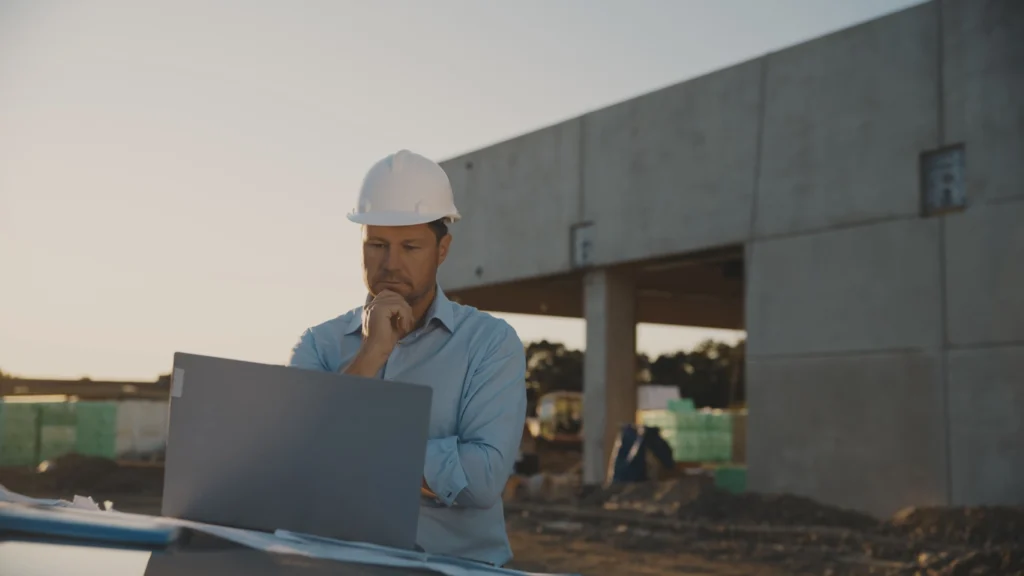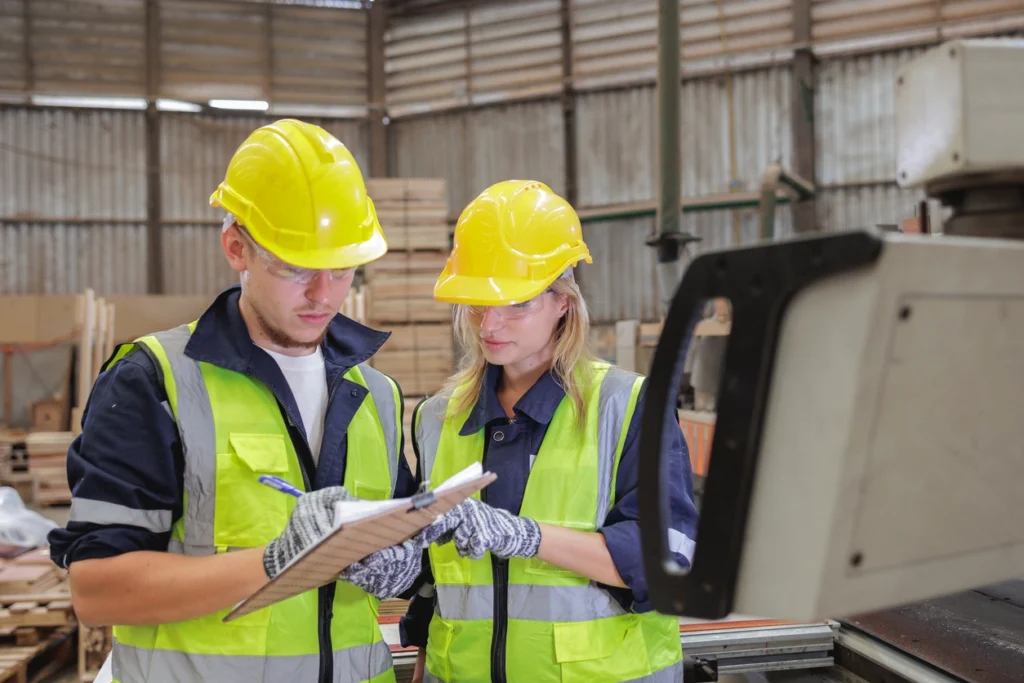Buying or investing in commercial property carries risk. Unseen environmental hazards can lead to costly cleanups, legal battles, or even health threats for occupants. Phase I ESAs are a crucial tool for minimizing these risks. It’s a thorough investigation of a property’s history and current condition, designed to spot potential contamination issues.
So, who should consider Phase I ESAs? Buyers, sellers, lenders, and developers all benefit from the insights these reports provide. Skipping this step can leave you exposed to significant financial and reputational damage down the line.

The Anatomy of Phase I ESAs – A Step-by-Step Guide
Let’s break down the key components of a Phase I ESA and uncover the insights they offer:
Site Reconnaissance
An experienced environmental professional visits the property with a critical eye. They look for any visual evidence of past or present activities that could signal potential contamination. This includes:
- Stained soil or unusual odors
- Old underground storage tanks, even if no longer in use
- Improperly stored chemicals or hazardous materials
- Indications of old manufacturing or industrial processes
- Nearby land uses that might have impacted the site (e.g., gas stations, landfills)
Records Review
The ESA delves into a range of public and historical records. These help piece together the site’s past and identify potential red flags such as:
- Environmental agency databases that track spills or contamination incidents
- Old permits relating to chemical use, storage, or disposal
- Historical maps or aerial photographs that show previous structures or land uses
- Building department records that might reveal old industrial activity
Interviews
Knowledgeable individuals provide valuable context. The ESA team may interview current or former owners, operators, neighbors, or long-time residents. Their insights can uncover:
- Details about prior uses of the site not found in records
- Past incidents or spills that may have been unreported
- Suspicions or concerns held by those familiar with the property
The Report
All the findings are assembled into a clear, detailed report. This outlines the assessment process, summarizes the site’s history, and identifies any “recognized environmental conditions” (RECs). RECs are signs of potential contamination that warrant further attention. The report also provides recommendations, such as whether a Phase II ESA (with sampling and testing) is needed.
By understanding these steps, you gain a greater appreciation for the thoroughness of a Phase I ESA. It’s designed to leave no stone unturned, offering essential protection before you buy, sell, or invest.

Beyond the Basics: What Phase I ESAs Cannot Tell You
While a Phase I ESA is an invaluable tool, it’s important to understand its boundaries. This type of assessment focuses primarily on historical research and visual inspection. Here’s what it’s not designed for:
Confirming or Quantifying Contamination
Phase I ESAs might identify a potential hazard, like old chemical drums. However, it won’t tell you precisely if those drums leaked, what exactly they contained, or the extent of soil or groundwater contamination. If such issues are suspected, a Phase II ESA, involving sampling and laboratory analysis, is required.
Assessing Non-Environmental Hazards
While an ESA professional might note things like obvious structural damage or signs of mold, a Phase I is not a substitute for a full property inspection. These other safety and structural concerns require separate assessments by qualified experts.
Guaranteeing a Clean Site
A Phase I ESA follows professional standards to uncover potential problems, but it’s always possible that hidden issues might still exist. For this reason, buyers and sellers should consider options like environmental liability insurance to further manage risk.
The Importance of Qualified Professionals
The findings of a Phase I ESA are only as good as the expertise behind them. Choosing a company with experienced, qualified environmental professionals is paramount. They’ll know the right questions to ask, recognize subtle signs of past trouble, and accurately interpret the nuances of their findings.
Get in touch with Diablo Green today to get the guidance you need for your PHase 1 ESA.

Evolving ESA Standards & Your Due Diligence
The world of environmental regulations and best practices isn’t static. The American Society for Testing and Materials (ASTM), a respected standards-setting organization, regularly updates the requirements for Phase I ESAs. These changes reflect new scientific knowledge, emerging contaminants, and shifts in the way properties are used.
Staying informed about the latest ASTM standards is crucial for anyone involved in commercial property transactions. Here’s why:
- Potential impact on findings: Updates to standards can influence what’s considered a “recognized environmental condition.” A site that passed a Phase I a few years ago might warrant closer scrutiny under a newer standard.
- Liability protection: Following the current ASTM standard helps demonstrate your due diligence. If an environmental issue later arises, it signals that you took reasonable steps to assess potential risks.
- Informed decision-making: As standards evolve, they reflect the latest understanding of environmental hazards. By ensuring your ESA is up-to-date, you base your decisions on the best available information.
Questions to Ask Your ESA Provider
To ensure your assessment follows current best practices, ask your potential provider:
- Can you walk me through the latest ASTM standard and any key changes that impact my assessment?
- How does your team stay updated on emerging contaminants and evolving regulatory requirements?
- Does your company have experience with recently revised (or newly added) areas of concern?
Staying Ahead of the Curve
Remember, the goal of Phase I ESAs is to protect you from unforeseen environmental liabilities. By understanding the evolving standards and engaging qualified professionals, you make smarter, more informed choices about property transactions.
Phase I ESAs: Your Key to Informed Property Decisions
A Phase I ESA isn’t merely a box to check for your lender. It’s a powerful safeguard that empowers you to make the wisest decisions about your investment. By understanding its value, the process involved, and how to engage the right professionals, you set yourself up for success. Investing in this due diligence step may be the difference between uncovering a costly liability and confidently moving forward with a valuable property acquisition.
Frequently Asked Questions About the Fundamentals of Phase I ESAs
What’s the typical cost of a Phase I ESA?
Costs vary based on factors like property size, complexity, and location. However, it’s a small investment compared to the potential financial risks of environmental problems. A qualified ESA provider can give you an accurate estimate for your specific needs.
How long does a Phase I ESA take to complete?
The process usually takes a few weeks. This includes time for research, the site visit, report preparation, and sometimes follow-up communication with the client.
Can I perform my own Phase I ESA?
While standards don’t technically forbid it, conducting a proper ESA requires specialized knowledge and experience. To ensure accuracy and protect yourself from liability, it’s strongly recommended to hire a qualified environmental professional.
What if the Phase I ESA finds potential problems?
Don’t panic! A Phase I ESA is designed to identify risks before they become your problem. Recommendations might include further investigation (Phase II ESA), negotiation of the purchase price, or walking away from the deal altogether.
Are Phase I ESAs required by law?
Phase I ESAs aren’t mandated by federal law, but lenders often require them before approving financing for commercial properties. Even without this requirement, they’re a wise investment to minimize your risk exposure.